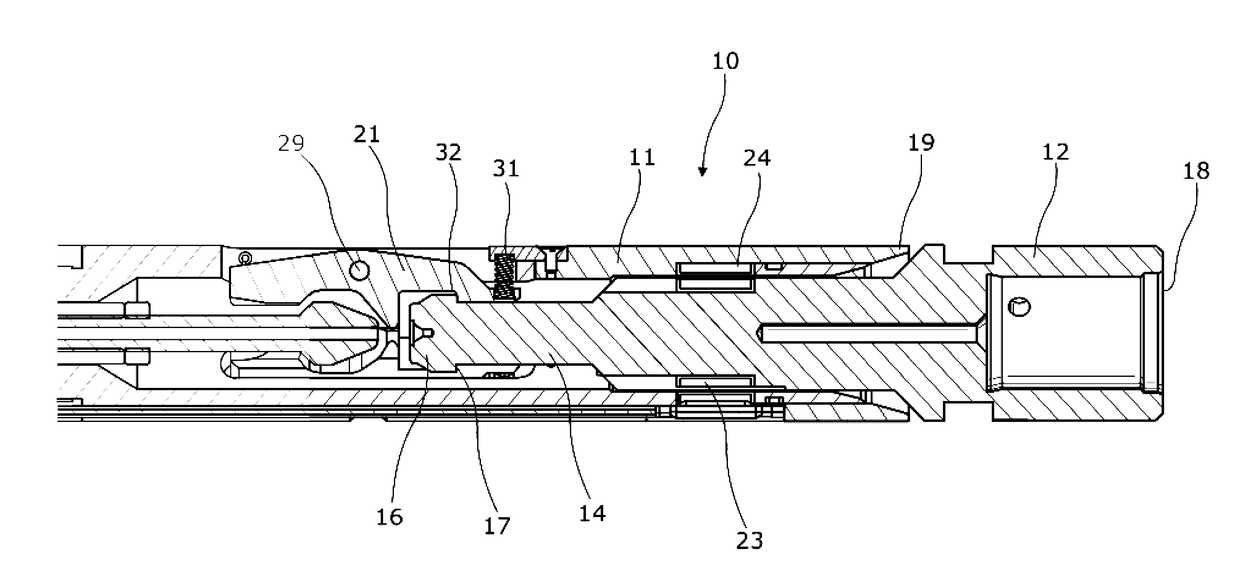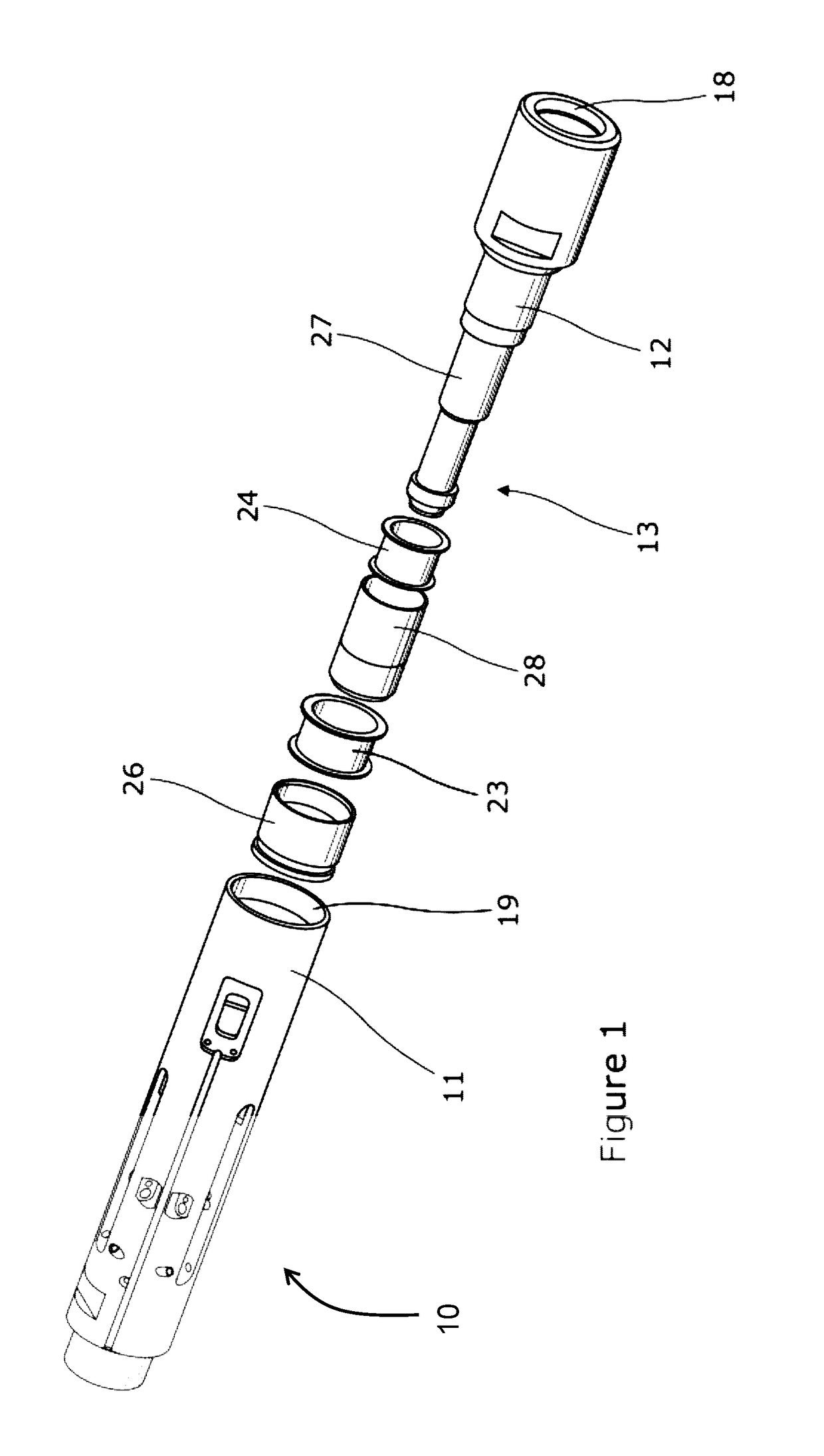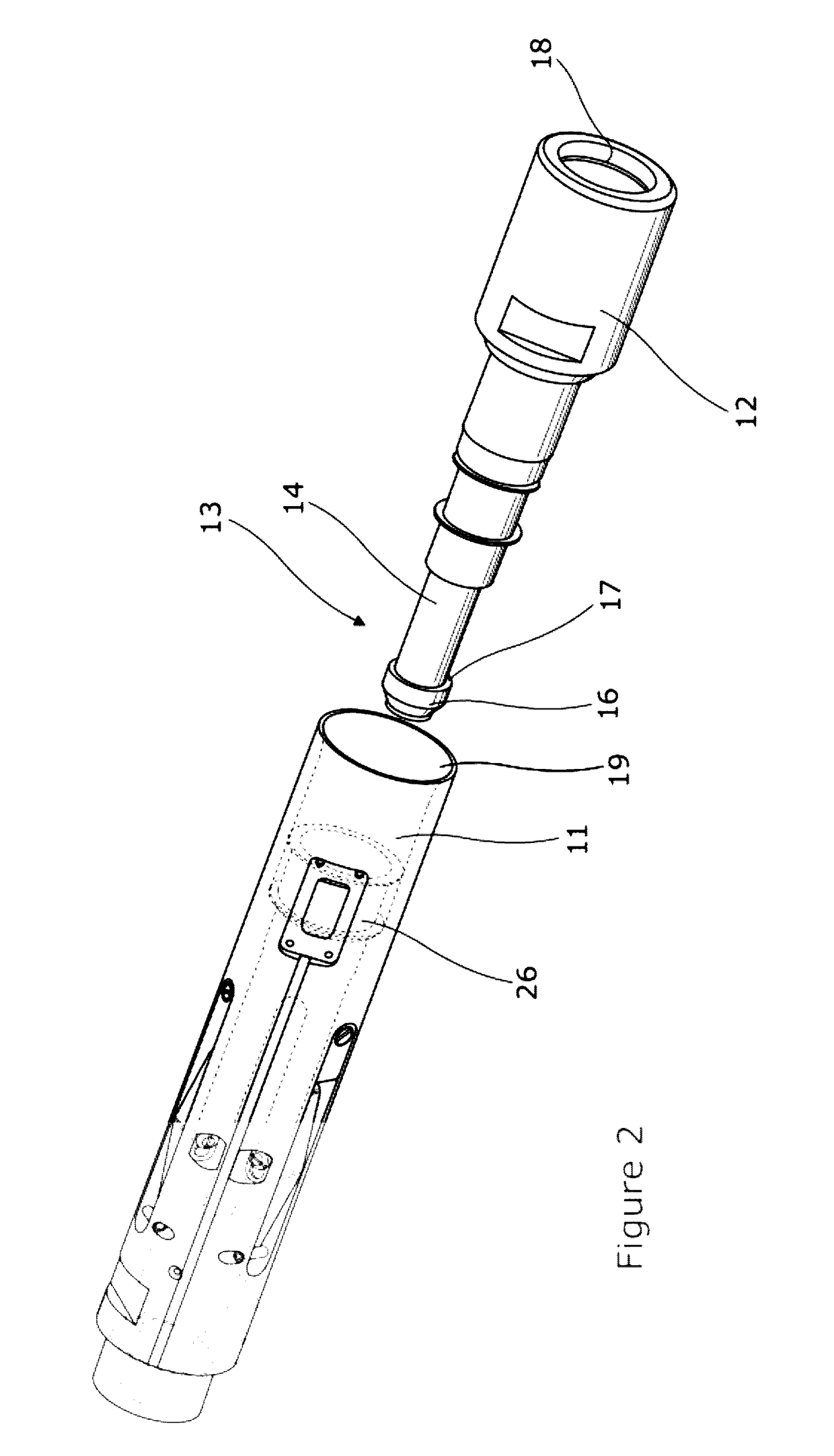Downhole Tool Coupling and Method of its Use
- Summary
- Abstract
- Description
- Claims
- Application Information
AI Technical Summary
Benefits of technology
Problems solved by technology
Method used
Image
Examples
Embodiment Construction
[0075]Referring to the drawings a downhole tool coupling 10 comprises two principal components in the form of first and second tool elements 11, 12 that are intended for selective coupling together to form a connected toolstring; and releasing, in a downhole environment such as a subterranean borehole. The nature of the tool coupling of the invention is to provide reliable communications and / or power connection between the components 11, 12.
[0076]As is almost inevitably the case in respect of toolstring elements in a downhole environment, one 11 of the tool elements is located relatively uphole of the other, 12, that therefore may be regarded as existing in a relatively more downhole position.
[0077]In the embodiment illustrated the relatively more uphole tool element 11 is constituted as a latching sub formed at the in use downhole end of an upper sonde section that may for example be a receiver of logging energy that has been passed through rock surrounding the borehole in which th...
PUM
 Login to View More
Login to View More Abstract
Description
Claims
Application Information
 Login to View More
Login to View More - Generate Ideas
- Intellectual Property
- Life Sciences
- Materials
- Tech Scout
- Unparalleled Data Quality
- Higher Quality Content
- 60% Fewer Hallucinations
Browse by: Latest US Patents, China's latest patents, Technical Efficacy Thesaurus, Application Domain, Technology Topic, Popular Technical Reports.
© 2025 PatSnap. All rights reserved.Legal|Privacy policy|Modern Slavery Act Transparency Statement|Sitemap|About US| Contact US: help@patsnap.com



